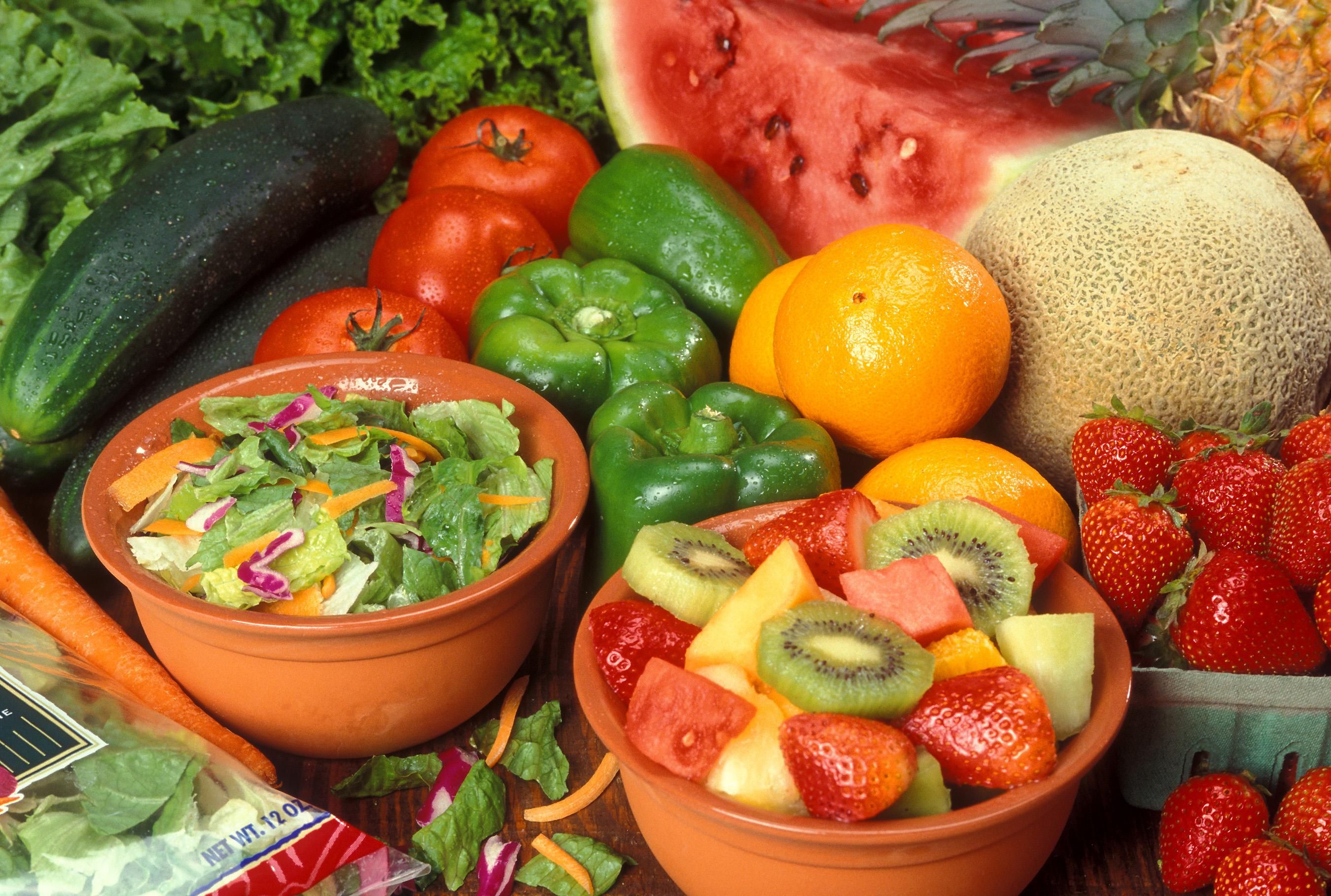If you have problems with constipation, bloating, abdominal pains, gastrointestinal tract, colon, pancreas, and/or gallbladder, you should increase your fiber intake along with water. Fruits and vegetables are better sources of fiber than whole grain, whole wheat, and fiber supplements. Here are the simple 1-2-3 of what you need to do:
Aim for 9 servings (or more) of fruits and vegetables per day. (Fruits and vegetables are great sources of fiber, better than whole wheat and whole grain products for many reasons). If your condition is severe, then you should have AT LEAST 9 servings per day. If you do not have a severe condition, then not getting to the ideal 9 servings would not be that big of a deal but you should still get as close as you can to the ideal recommendation. Also, you may have to adjust this recommendation for your specific condition. For example, a patient placed on a liquid diet who finds that they cannot hold down raw fruits (including smoothies) would fulfill this recommendation of 9 servings with cooked vegetables (processed in blender before being cooked in vegetable soup).
Aim to drink 10 glasses of water per day. (You may also aim for 5 small water bottles of water, which is about 85 fl. oz. total.) One simple way to fulfill this is to keep drinking water whenever you eat and whenever you snack. [The common complaint about water is the taste (or lack thereof). Drinking water with food should be easier. Another advantage of drinking water whenever you eat is making you feel full while eating less.] Do
not count caffeinated beverages and other beverages as water.
Noncaffeinated ginger-tea may be counted as water. Black tea would not
be counted as water.
Exercise. Exercise (in addition to recommendations 1 and 2 above) will have a synergistic effect in improving your condition. At the minimum, walk (or ride on an exercise bike) for 30 minutes per day. (However, it depends on the situation. For example, for some patients who just had surgery, they may not even be able to walk for 30 minutes, but maybe just 5 minutes. Speak to your doctor and adjust for your individual condition. However, for most cases, you would probably be able to do even more than walking for 30 minutes per day. In most cases, 30 minutes of walking per day would be the minimum, if you want your condition to improve.)
Reaching the Ideal Levels is Important for the More Critical Conditions
The more serious your condition, the more closely you have to follow the recommendations (if you don’t want to end up in the hospital.) For example, if you are reading this because of slight bloating, abdominal discomfort, and constipation, you would probably do fine even if you just get your intake of fruits and vegetables to 5 servings per day and drink 6 glasses of water. Even though you fall slightly below the ideal, you may still be fine for milder conditions.
However, if you have more severe gastro-intestinal problems (such as problems linked with inflammation, infections, and/or symptoms of nausea and vomiting), then it is more critical for you to reach the ideal recommendation of at least 9 servings of fruits and vegetables and at least 8 glasses of water. When you are facing more severe conditions, there are always factors you can control and factors you do not have control over. These nutrition and exercise recommendations are factors you can control. The problem is - some patients do not take control over what they have control over (such as in what they eat and in exercise).
Fruits and Vegetables are Better Than Whole Wheat and Whole Grain
Although whole wheat and whole grain products can be high in fiber, they may cause you to lose important nutrients. They would pull more nutrients into your stool and out of your body. Also, some people are gluten-sensitive and would have more gastro-intestinal problems from eating certain types of whole-wheat and whole-grain products (if they are not gluten-free).
Fruits and vegetables generally do not have these problems that wheat and grain have.
Fiber Does Not Help Without Water
Increasing fiber intake without increasing water intake would not help you. Increasing fiber without adequate water intake may actually make symptoms worse for you. You have to increase water intake along with fiber to reap the benefits.
Fiber Rationale
Fiber pulls water into the colon to produce softer and bulkier stools to promote regularity. However, some fiber sources like grain and wheat also pulls other nutrients into the stool and out of the body (without making up for them). That’s one reason why fruits and vegetables are better fiber sources.
The Academy of Nutrition and Dietetics recommends 25 to 35 mg of total fiber per day. (10 to 15 g per 1000 calories should be of soluble fiber.)
Increase Fiber Gradually
Sudden increase in fiber consumption may cause more bloating, gas, and abdominal discomfort/pain. This is especially true with grain and wheat as well as fiber supplements. This is especially true if you do not increase your water intake enough with the fiber. If you are increasing your fiber intake, do so gradually. Also, increase exercise activity as you increase your fiber intake gradually.
Examples of Good Sources of Fiber
Prunes, apples, bananas, and pinto beans are examples of good sources of fiber.
Conditions Needing Increased Fiber Intake
The following are some conditions requiring increase of fiber and water intake:
Constipation
High cholesterol (hypercholesterolemia) and related conditions such as high blood pressure (hypertension) and heart disease (and other cardiovascular conditions)
Prevention of blood sugar conditions (such as diabetes, hyperglycemia, and hypoglyemia)
Gastrointestinal prblems (intestinal cancer, pancreatic problems, gallbladder problems, and other related problems
Colon problems such as diverticulitis and diverticulosis
References (for lay readers)
References (review articles for doctors, health and science professors, and other health professionals)
Copyright: © 2016.
This document is the sole property of Amadeo Constanzo. You may freely
post this article without charge if and only if you include this entire
copyright notice including the following links. Other free teachings
from Amadeo Constanzo can be found at SpirFit.org and http://www.facebook.com/pages/SpirFit/141881909215772










